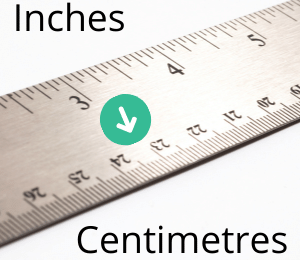Education is the backbone of any great nation. The ability to pursue an education is one of the truest yardsticks of a country’s wealth, equity, and the quality of its rulers. Those who work in education are particularly an underappreciated demographic. Teachers, professors, and other such professionals are key in ensuring that future generations are well poised to be able to take on the future as the generations that will care for the world in our stead. Therefore, today we choose to look back at our nation’s history in education, so that we may better understand where we came from, and where we are today; and that the educational leaders of the future can better learn from the lessons of the past.

The Colonies and The First School
What would eventually become The United States of America was at first a series of British colonies. Although the native populations had been referring to this land as “Turtle Island” and many other names depending on tribe and linguistic convention, the first recorded use of the term “America” comes from a 1500’s map attributed to an Italian explorer. America was colonized by the British the next century in 1607, looking to expand their power and find new opportunities in what they termed “The New World.”
After the first colony was founded, directed efforts toward establishing some kind of education system began in Massachusetts. The colony was the first to have a purpose-built school (the Boston Latin School in 1635,) the first college (Harvard College in 1636), and the first to pass a law about education in 1642. However, it soon became apparent that this system of learning was inefficient. Despite the formation of schools, these were largely funded by (and thus under the yoke of) the Church, local schools established by parent groups, boarding schools for the children of the wealthy, or work apprenticeships. There was very little in the way of accessible, formal education.
In order to tackle this issue in 1647 Massachusetts, again leading the charge in education, established a new law. Every town with at least 50 families would need to hire a schoolmaster to teach the town’s children reading, writing, and arithmetic, and every town with at least 100 families would need to construct a grammar school to prepare male children for Harvard College attendance.

Must Read – What is Needed to Become An Educator?
Sign of the Times
There were major changes to the education system after this point, some better than others. In 1779, Thomas Jefferson suggested what he called a “two-track” education system. The two tracks were designed to offer tailored education to what he called “laborers” (tradesmen” and “the learned” (scholars.) It was a heavily classist system, with the emphasis being that the educated elite and the non-scholarly masses were kept distinctly separate, save for the few of the “laborer” class who qualified for a scholarship; a system that Jefferson claimed would “rake a few geniuses from the rubbish.”
In 1785, the government created townships on land that it had stolen from the native populations, and established local schools and in some cases, the universities that would eventually become the state and public universities of today.
In an oddly progressive move, however, in 1790 Pennsylvania’s constitution declared education as a constitutional right, offering free education to poor children, while children from wealthy or moneyed families were expected to pay tuition.

The 1800s and Modernity
The 1800s saw several major, rapid-fire shifts in our country’s education landscape, most of which come from Massachusetts. In 1821, the first truly public school, English High School was founded in Boston as an alternative to Boston. Like all educational bodies at the time, it was an institution founded for boys, while girls were expected to attend the so-called “Dame School” run by female teachers. Indeed girls were not permitted to attend English High School until the 1970s.
When it comes to female emancipation and women’s education rights, it was Georgia leading the charge, when in 1836 they founded Wesleyan College, America’s first women’s college.
Superintendents were first appointed in 1837 in Buffalo, New York, and Louisville, and in that same year, Massachusetts (again) introduced the first state board of education. In 1857 the National Teachers Association was founded, an organization that would later become the National Education Association.
The first public kindergarten program was founded in St. Louis in 1873. However, this decade also led to one of the worst atrocities in American history, as in 1879 the Carlisly Indian Industrial School of Carlisle Pennsylvania became the first in a line of boarding schools that would force hundreds of thousands of Native American children away from their families and raise them according to white, European customs and cultural ideas. These schools were founded on the principle of “Kill the Indian, Save the Man.” There are survivors still alive today who struggle with the trauma of these schools. Many of the schools in this system would not close until the early 1900s, with most schools remaining operational until the 1970s.
The 1900s continued the social formalization and equalization of education. As time went on, the first SATs were held in 1926. The School Lunch Act was passed in 1946 to provide low-cost or free lunches to low-income students. Several major Supreme Court choices were made, altering the way education could be received, including laws both advocating and admonishing segregation, which would finally be revoked in the Civil Rights Act of 1964.
There is still much that needs to be done in our education system to reach a truly equitable state, however, changes such as the Civil Rights Act, The Equal Educational Opportunities Act (1974), and the Education for All Handicapped Children Act (1875) are all changes that have set a precedent for more marginalized communities to come forward and demand their right to accessible education. The question isn’t which community will be the next to have their right to education and representation within the education system acknowledged, just when the change will happen. Hopefully, one day soon, we become a nation where everyone is able to pursue an education, whether through a Doctorate in Educational Leadership online or otherwise, regardless of race, gender, sex, sexuality, disability, or class.





